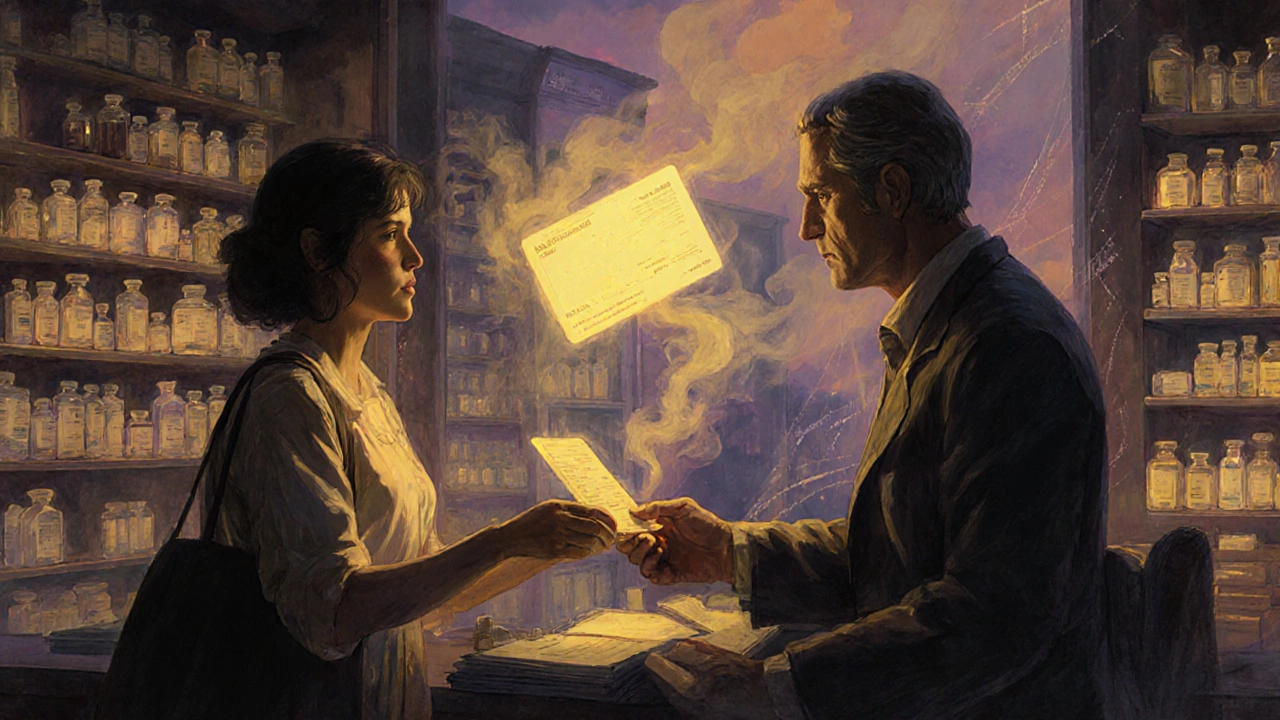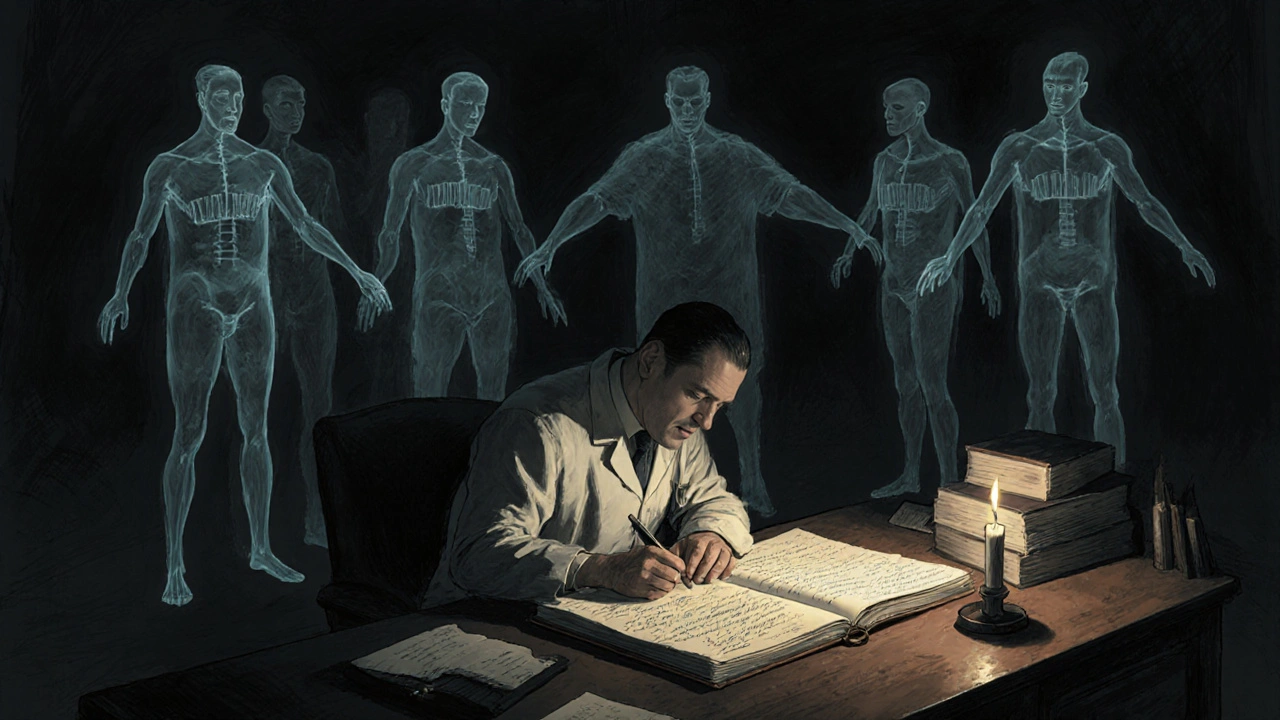Side Effect Detection Calculator
Clinical trials are too small to detect rare side effects. Enter values below to see how many people need to take a drug before side effects become detectable.
Every year, millions of people take new medications that were never tested on them before. Clinical trials involve a few thousand volunteers under strict conditions. But once a drug hits the market, it’s used by hundreds of thousands - or even millions - of people with different health conditions, ages, diets, and other medicines in their system. That’s when hidden side effects start showing up. This is where post-marketing pharmacovigilance comes in: the quiet, relentless system that catches dangers drugs didn’t reveal in the lab.
Why Clinical Trials Miss Side Effects
Clinical trials are designed to prove a drug works, not to find every possible risk. Participants are carefully selected: no pregnant women, no people with kidney disease, no one taking more than two other medications. Trials last months, not years. And even the largest studies rarely include more than 5,000 people. That’s not enough to catch side effects that happen in one out of every 10,000 users. Take Vioxx, a painkiller approved in 1999. The trials involved about 5,000 patients. No major heart risks showed up. But once over 80 million people started taking it, the data revealed a nearly two-fold increase in heart attacks. The drug was pulled in 2004. That’s not an outlier - it’s the rule. The FDA found that 78% of serious safety issues for drugs approved between 2001 and 2010 were discovered only after they hit the market.How Side Effects Are Caught After Approval
There are four main ways new side effects are spotted after a drug is sold:- Spontaneous reporting: Doctors, pharmacists, and patients report unexpected reactions to government systems. In the U.S., this is MedWatch. In the UK, it’s the Yellow Card Scheme. These systems rely on people noticing something strange and taking the time to report it.
- Electronic health record mining: Systems like the FDA’s Sentinel Initiative scan millions of patient records automatically. They look for patterns - like a sudden spike in liver damage among people prescribed a new diabetes drug.
- Prescription event monitoring: In countries like the UK and Sweden, every prescription for a new drug is tracked. Researchers follow patients over time to see what happens - not just when they get sick, but whether they stop taking the drug, switch to another, or visit the ER more often.
- Linked health databases: Some countries connect hospital records, pharmacy logs, and death registries. If a drug is linked to a higher number of strokes or hospitalizations across multiple systems, that’s a red flag.
The European Medicines Agency’s EudraVigilance database alone handled over 28 million individual safety reports from 108 countries by the end of 2022. That’s not just numbers - it’s real people reporting dizziness, rashes, heart palpitations, or worse.
What Happens When a Signal Is Found
Finding a pattern isn’t the end - it’s the beginning. Once a potential safety signal is detected, experts dig deeper. They check if the reaction is truly linked to the drug or just a coincidence. Did the patient have another illness? Were they taking other drugs? Was the dosage wrong? If the link holds up, regulators act. That could mean:- Adding a warning to the drug label
- Limiting who can get the drug (for example, only for severe cases)
- Requiring doctors to complete special training before prescribing
- Running a new study to confirm the risk
- Or, in rare cases, pulling the drug off the market
One powerful example is carbamazepine, an epilepsy drug. Researchers discovered that people with a specific gene variant (HLA-B*15:02) were at high risk of a deadly skin reaction called Stevens-Johnson syndrome. Once screening for that gene became routine in Southeast Asia, cases dropped by 95%. That’s pharmacovigilance turning into prevention.

Who Reports Side Effects - And Why Most Don’t
Doctors and pharmacists are supposed to report side effects. But in reality, they often don’t. A 2022 survey found that 68% of U.S. physicians find the MedWatch reporting process too slow and complicated. It takes an average of 22 minutes to fill out one form. Many just don’t have the time. Patients? Even fewer report. Only 12% of Americans know about MedWatch. Yet, when asked, 83% said they’d report side effects if it was easier. That’s a huge missed opportunity. A patient who notices a new rash after starting a medication might not think it’s serious - until it turns into something worse. If they knew how to report it, that could be the clue that saves someone else.Global Differences in Safety Monitoring
Not every country does pharmacovigilance the same way.- The U.S. uses a mix of passive reporting (MedWatch) and active scanning (Sentinel). It’s powerful but suffers from underreporting.
- The EU has a unified system (EudraVigilance) and strict rules called GVP. Every drug maker must submit regular safety updates. But enforcement varies by country.
- The UK has the oldest system in the world - the Yellow Card Scheme, started in 1964. It’s simple, and they’ve built a mobile app that makes reporting easy for pharmacists.
- Japan requires companies to monitor new drugs for 4 to 10 years after approval. That’s longer than anywhere else.
Some countries, especially in Africa, have almost no system. Only 38 of 54 African nations have functional pharmacovigilance centers. That means drugs are being used without anyone watching for harm.

Technology Is Changing the Game
The future of pharmacovigilance isn’t just forms and spreadsheets. It’s AI. The FDA’s Sentinel System 3.0, launched in 2023, uses artificial intelligence to scan 5 million new patient records every day. It can spot patterns in doctor’s notes, lab results, and hospital codes - things a human might miss. It finds signals 73% faster than before. Other innovations include:- Wearables: Apple and Pfizer are testing if smartwatches can detect irregular heart rhythms linked to new medications.
- Social media monitoring: IBM Watson analyzed Twitter and Reddit posts to predict side effects with 87% accuracy.
- Blockchain: Companies like Novartis and Roche are testing secure, tamper-proof systems to share safety data across borders.
By 2030, experts predict that real-world data from pharmacovigilance will influence 65% of regulatory decisions - up from just 28% in 2022.
The Human Cost of Inaction
Pharmacovigilance isn’t just about data. It’s about people. Every unreported side effect could be someone’s mother, child, or neighbor. A drug that seems safe on paper can become deadly in the real world - unless someone speaks up. The system isn’t perfect. Small drug companies often lack the staff to monitor safety properly. Reports are delayed. Data is incomplete. But the tools are getting better. The awareness is growing. And the stakes? Nothing less than lives.Every time you take a new prescription, you’re part of a global safety net. You don’t need to be a doctor to help. You just need to pay attention - and speak up when something feels wrong.
What is post-marketing pharmacovigilance?
Post-marketing pharmacovigilance is the ongoing monitoring of drug safety after a medication has been approved and sold to the public. It tracks adverse reactions that weren’t seen during clinical trials, using real-world data from doctors, patients, electronic records, and automated systems to find new risks.
How long does it take for a side effect to be discovered after a drug is approved?
Some side effects appear within months; others take years. The FDA found that 31% of serious safety issues for drugs approved between 2001 and 2010 weren’t detected until more than five years after approval. This is why long-term monitoring is essential - especially for drugs taken by older adults or for chronic conditions.
Can patients report side effects themselves?
Yes. In the U.S., patients can report side effects directly to the FDA through MedWatch. In the UK, anyone can submit a Yellow Card report online or via the app. Many countries now offer simple digital tools to make reporting easier. Even a single report can help identify a pattern that leads to a life-saving warning.
Why do so many side effects go unreported?
Many healthcare providers say reporting is too time-consuming. Patients often don’t know they can report, or they assume the side effect is normal. Others worry their report won’t matter. Studies show only 1-10% of adverse events are reported - meaning 90% or more of potential safety signals are lost.
Are newer drugs more dangerous than older ones?
Not necessarily - but they carry more unknowns. New drugs are tested on smaller, healthier groups, so rare side effects or interactions with other medications may not show up until they’re used widely. Older drugs have decades of real-world data behind them, making their risks better understood - even if they’re not perfect.
What’s being done to improve pharmacovigilance?
Regulators are adopting AI to scan health records faster, integrating wearable data from smart devices, and simplifying reporting tools for patients. The EU is creating a single database to replace 27 national systems. The WHO aims to increase global reporting rates by 50% by 2030. The goal is to catch risks sooner - and save more lives.


Leisha Haynes
November 22, 2025 AT 07:53So basically we’re trusting Big Pharma to tell us what’s safe while doctors are too busy scrolling TikTok to file a report? 😅
Why does it take a death toll to get a warning on the label? I just took that new sleep aid last week and my dreams were about flying squirrels. Should I report that or just assume it’s ‘normal’?
Kimberley Chronicle
November 23, 2025 AT 04:05From a pharmacovigilance standpoint, the integration of real-world evidence (RWE) into signal detection frameworks is transformative. The EU’s GVP mandates longitudinal follow-up, but the real bottleneck remains underreporting due to cognitive load on HCPs. The Yellow Card app’s UX design is a masterclass in behavioral nudging - reducing friction increases compliance. We need to embed reporting into EHR workflows, not bolt it on as an afterthought.
Also, AI-driven NLP parsing of free-text clinical notes in Sentinel is a game-changer - it captures nuance that structured fields miss. The future is passive surveillance, not active solicitation.
giselle kate
November 25, 2025 AT 02:54USA still leads the world in drug safety. Everyone else is playing catch-up with their half-baked systems. The EU’s EudraVigilance? A bureaucratic mess. Japan’s 10-year monitoring? Overkill. We’ve got AI scanning millions of records daily while Europe still relies on paper forms mailed in by grandmas. If you’re not in America, you’re basically a guinea pig. And don’t even get me started on Africa - no system? No wonder they’re all dying from aspirin.
STOP trying to copy us. Just adopt MedWatch and be done with it.
Josh Zubkoff
November 26, 2025 AT 08:36Let’s be real - this whole system is a farce. They pull Vioxx after 80 million people took it, then act like they’re heroes for catching it. Meanwhile, every new antidepressant hits the market with a 1 in 5000 risk of suicidal ideation - and they don’t even update the label for a year. It’s not ‘pharmacovigilance,’ it’s ‘pharmacovigilance theater.’
And don’t even get me started on the ‘patients can report!’ nonsense. Who has time to fill out a 22-minute form after their knee swells up? The system isn’t broken - it’s designed to fail. Profit before people. Always.
Shirou Spade
November 26, 2025 AT 19:29There is a quiet dignity in this invisible labor - the doctor who writes down a rash, the grandmother who calls her pharmacist, the patient who thinks, ‘This isn’t right’ and clicks ‘submit.’
We speak of algorithms and AI like they’re saviors, but the truth is, the system breathes because ordinary people choose to speak up - even when no one is listening. The machines detect patterns, but only humans recognize pain.
Maybe the real innovation isn’t in the data - but in the courage to report it.
Lisa Odence
November 27, 2025 AT 08:50As a certified clinical pharmacologist with dual board certifications in pharmacokinetics and adverse event analysis (FACPM, FASHP), I must emphasize that the current pharmacovigilance infrastructure, while commendable in its theoretical framework, suffers from systemic underreporting due to cognitive dissonance among prescribers and a profound lack of public health literacy. The FDA’s Sentinel Initiative, though technologically sophisticated, is hamstrung by interoperability issues between disparate EMR platforms - a problem exacerbated by HIPAA’s fragmented implementation across state lines. Furthermore, the utilization of wearables as real-time biosensors (e.g., Apple Watch ECG integration with Pfizer’s trials) represents a paradigm shift in longitudinal safety monitoring, yet regulatory acceptance remains sluggish due to validation lag in algorithmic risk prediction models. I have personally submitted 17 MedWatch reports since 2020 - and received zero feedback. This is not a system. This is a graveyard of data. 🤕📊📉
Dolapo Eniola
November 27, 2025 AT 20:26Look, Africa don’t got no system? That’s because we don’t need it. We don’t take all these fancy pills. We use herbs, we pray, we live. You Americans think every problem needs a drug and a database. My cousin took that new diabetes med and got dizzy - he stopped it, drank ginger tea, and now he’s fine. Why you need AI to tell you when you feel weird?
Stop pushing your tech on us. We know our bodies better than your algorithms. 😎💉 #AfricaRising #NoMoreWesternDrugs
Andrew McAfee
November 28, 2025 AT 15:03Interesting how we treat drugs like they’re immune to culture. In India, we’ve had polypharmacy for centuries - elders take 8-10 herbs, teas, and powders daily. No one reports side effects because they don’t see them as ‘side effects’ - they’re just part of the journey. The Western model assumes every reaction is a failure. But maybe some reactions are just… life adjusting.
Still, I get it. When your uncle has a stroke after a new statin, you want answers. The system’s flawed - but the intent? Pure. We just need to stop treating global health like a spreadsheet.